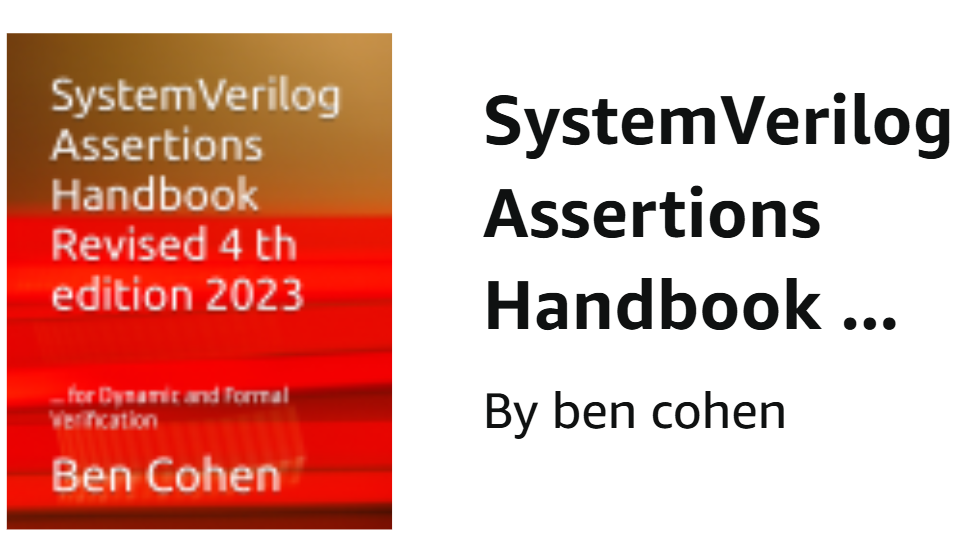
PDF: SystemVerilog Assertions Handbook Revised 4 th edition 2023: … for Dynamic and Formal Verification
This is a PDF version of the book
For hardcopy, see Amazon.com
BOOK TOC: See
https://www.amazon.com/dp/B0C6W4BF1D?asin=B0C6W4BF1D&revisionId=&format=4&depth=1
I am proud to say that this book has been praised my many for the understanding and practical applications of assertions. This SystemVerilog Assertions Handbook, Revised 4th Edition adds papers I wrote and provides answers to many users’ questions asked in forums. The added papers provide deeper depths in the understanding of how SVA works. To accomplish such a mission, I created a model of how SVA works using SystemVerilog tasks. That paper, 1) Understanding the SVA Engine Using the Fork-Join Model, addresses important concepts about attempts and threads. It also emphasizes the total independent lifetimes of attempts and processing of those attempts. 2) The paper Reflections on Users’ Experiences with SVA, part 1, provides important concepts on expressing requirements, terminology, threads in ranges and repeats in antecedents, and multiple antecedents. 3) The paper Reflections on Users’ Experiences with SVA, part 2 addresses the usage of these four relationship operators: throughout, until, intersect, implies. 4) The paper Understanding Assertion Processing Within a Time Step goes into detail about how evaluation regions should be handled by a simulator as described in the SystemVerilog LRM; this should give you a better understanding of how assertions work. 5) The paper Understanding and Using Immediate Assertions provides guidelines in the use of immediate assertions. 6) the SVA Package: Dynamic and range delays and repeats provides a library and model solutions for writing assertions with dynamic repeats/delays. 7) The paper Support logic and the always property provides examples of support logic needed for certain types of requirements where the strict use of only SVA does not cover. 8) The paper SVA in a UVM Class-based Environment explains how SVA complements a UVM class-based environment. It also demonstrates how the UVM severity levels can be used in all SVA action blocks instead of the SystemVerilog native severity levels. 9) The paper Assertions Instead of Fsms/Logic for Scoreboarding and Verification Explains how SVA can be used instead of scoreboard. 10) The addendum Understanding Multiclocking, .Triggered, .Matched clarifies by example 1800’s definitions of mulitclocking, .triggered, and ,matched. 11) The addendum Users’ Q & A provides examples of complex Q & A asked by users in industry.
